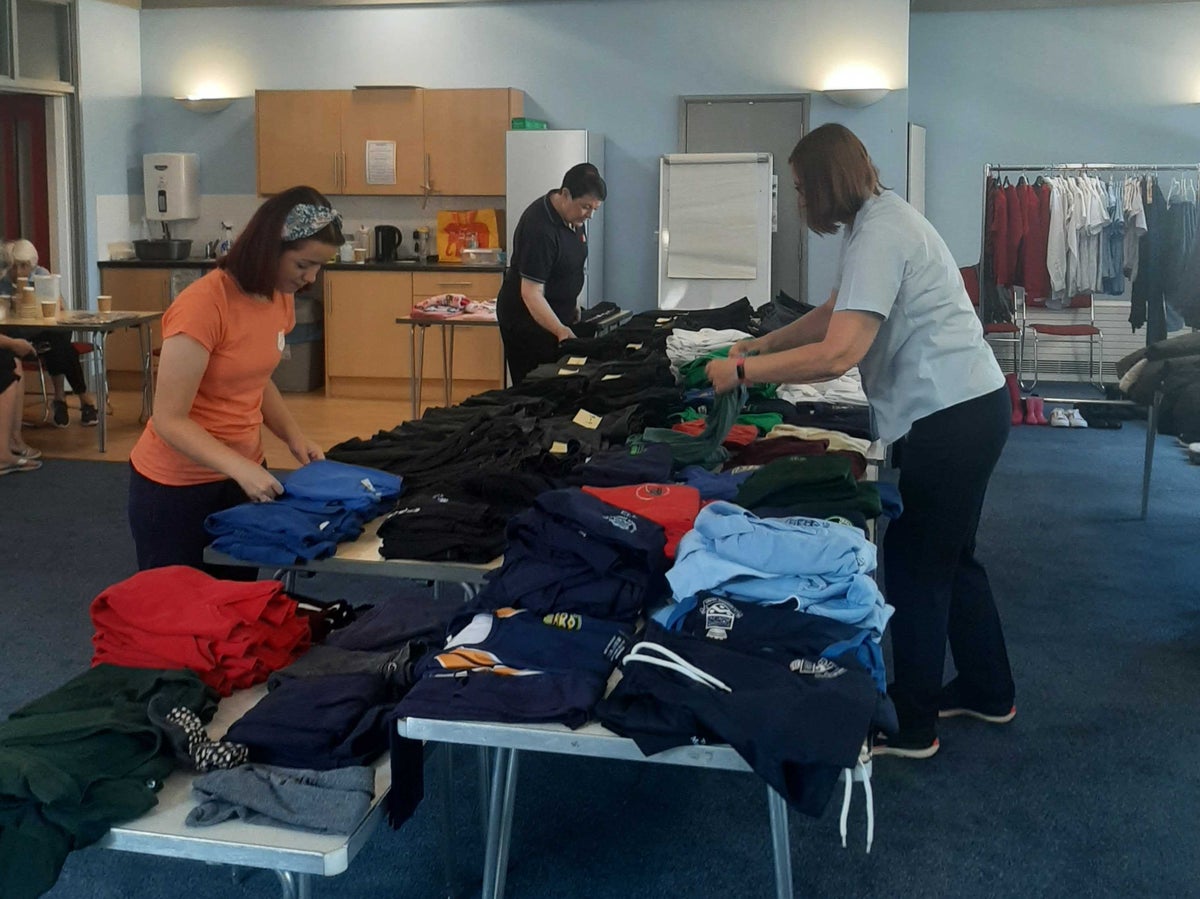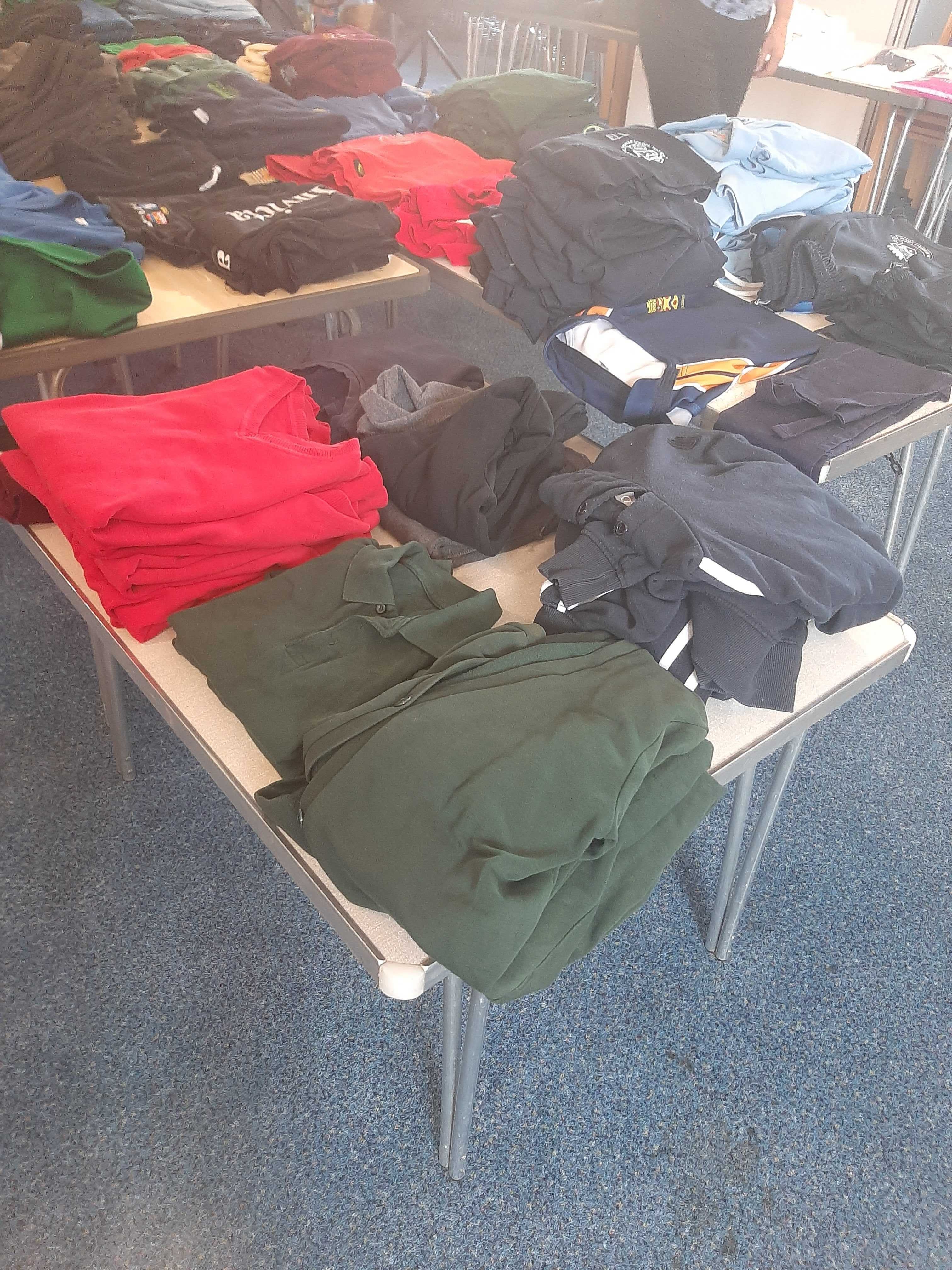
Struggling families are being forced to rely on uniform and food donations for back-to-school supplies amid the escalating cost of living crisis.
Parents told The Independent they have had to seek help to provide the basics, while food banks have seen demand double during the summer holidays.
One charity warned that the cost of sending children back to school was now “prohibitive” for many low-income families.

More than 2.1 million food parcels were handed out by the Trussell Trust food bank network in the year up to spring – a 14 per cent rise on pre-pandemic levels. The Independent Food Aid Network (IFAN), which represents 550 independent food banks, said most of its centres had reported a rise in demand since the start of the year.
Are you struggling with the cost of the school return? Get in contact at zoe.tidman@independent.co.uk
Since then, inflation has soared even higher, to 10 per cent, and energy bills have risen, with a further 80 per cent increase coming on 1 October.
Three quarters of parents have said they were planning to reduce their spending in the run-up to the school return, including meals out, holidays and clothes, according to a poll published by market researcher quantilope.
Families have also been seeking help at uniform banks handing out donated clothes as the new school year approaches.
During a visit to one centre in Kent, The Independent spoke to working professionals, refugees, full-time carers and homeless families, all seeking help with uniforms, the cost of which can run into hundreds of pounds.
“People are worried – they are genuinely worried – about how they are going to kit out their children and pay the bills,” said Carole Dodd, 66, who runs the Salvation Army uniform bank in Maidstone.

Her uniform bank opened up to the wider public earlier this month, having previously targeted only the most disadvantaged families when it started last year. “It was extremely busy. There was waiting at the door,” she said. “It was like the January sales.”
Katie*, a mother visiting the centre, said the cost of the school return was “crazy”.
“There is not much you can afford to buy new any more,” said the mother of four, who is on universal credit as a full-time carer for her son.
The 33-year-old managed to find some school trousers before heading to the Salvation Army food bank downstairs, whose organisers told The Independent demand had risen in recent weeks from 25 to 40 customers a week.
Despite this help, Katie said she was still worried about other school-related costs, such as lunchboxes, water bottles and travel.

The added cost of sending her children back to school has fallen at a time when budgets are already tight due to the rising cost of household bills.
“We were talking yesterday about how we can reduce how much water we use. We are making sure we are turning lights off,” Katie said. The family had a car, but was choosing to walk more, she added.
Harriet*, a teacher, was at the uniform bank with her four-year-old daughter. “My other half is definitely worried about energy prices, so trying to save elsewhere will help us in the long term,” she said.
She estimated that it would have cost £150 to kit out her daughter in the shops – including a spare uniform – but she had managed to cut this down with clothes found at the uniform bank.
“This is our first time getting uniform. I don’t think I quite realised the cost of sending your child to school,” she said.

Sabine Goodwin from IFAN said: “For too many families struggling on low incomes, the cost of sending children back to school is prohibitive this year.
“Many of our member organisations are doing their utmost to help with access to school uniforms because struggling to buy food means not being able to afford other essentials.
“Britain’s poverty crisis is spiralling out of control and its long-term impact will be devastating on huge numbers of the children returning to school next week.”
The government introduced new rules last year aimed at keeping school uniform costs down, including by keeping branded items to a minimum and making second-hand options available. Education union bosses said schools tended to follow the guidance before it was mandatory.

Billy McGranaghan, who founded and runs the Dad’s House charity in west London, told The Independent that clients at his food bank were still worried about the cost of the school return.
“It’s the school uniforms. It’s the bus fare for the 10 and 11-year-olds who are going to secondary schools because the mums and dads want to get on the bus or the underground with them and they can’t afford it.”
Dad’s House has helped 726 families with food parcels from July until mid-August, he said, which was a “huge rise” on the 300 to 350 customers in an average month.
“We’ve been wiped with food this week. We’ve never been this empty,” the charity founder said.
Mr McGranaghan said families had been struggling in the summer holidays, with parents unable to rely on their children being fed at school, and he worried that things would get worse when energy bills rocket in October.
“It’s going to be armageddon,” he said.
Freya*, a mother of two visiting his food bank in Fulham, said it had been “very difficult” to deal with the costs of the school return this year while other prices were rising.
“School uniform is very, very expensive already. And with this rise in prices it is getting more expensive,” she said.
The 51-year-old, who is on universal credit, said some uniform was being changed this year. “I told my daughters I can’t buy a new uniform,” she said. Instead, she told them they would have to go to school in the old one, she added.
A Department for Education spokesperson said school uniform “must never be a burden for parents or a barrier to pupils accessing education”.
As well as making guidance designed to make keeping uniform costs down compulsory, the spokesperson said the government also knew that “schools and families are facing increased cost pressures more broadly” and was providing more than £37bn to help households in the greatest need.
* Some names have been changed







